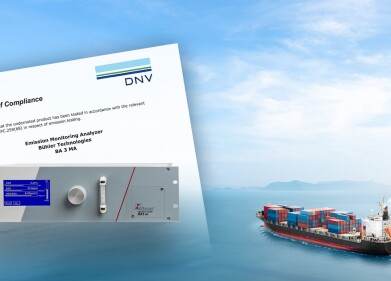Measurement and testing
How Many Countries Use ASTM?
Aug 29 2022
When it comes to standardised testing methods, no entity is more recognised or respected than ASTM International. The global organisation develops, publishes and continually updates more than 10,000 voluntary consensus standards spanning a myriad of sectors. From petroleum, cement and steel to food and pharmaceuticals, ASTM standards cover both established and emerging industries.
According to the ASTM website, the core goal is to “improve product quality, enhance health and safety, strengthen market access and trade, and build consumer confidence.”
More than 30,000 volunteers spread across 140+ countries work together to develop the standardised methods. This collaborative approach ensures ASTM standardised testing methods are universally accepted around the world.
ASTM around the world
ASTM standards are developed using technical expertise from professionals in more than 140 countries. Together, this group represents more than 90% of the global population. While standards are developed by ASTM members, the finished products are available to countries around the world. This means ASTM standards are used everywhere from global superpowers like the United States and China to smaller countries like Luxembourg, Jordan and Iceland.
“Committed to serving global societal needs, ASTM International positively impacts public health and safety, consumer confidence, and overall quality of life,” reads a mission statement published by ASTM International. “We integrate consensus standards - developed with our international membership of volunteer technical experts - and innovative services to improve lives… helping our world work better.”
The goal is to help the world work better, which is why ASTM International standards are available to countries across the globe, regardless of whether they’re members.
ASTM in the oil and gas sector
From acidity and alkalinity to zeolite catalyst testing and analysis, ASTM offers hundreds of standardised test methods designed especially for the oil and gas sector. Around the world, these test methods are used to analyse crude oils and refined petroleum products, including eco-friendly fuels, lubricants and chemicals.
In the 3rd Edition of the Guide to ASTM Test Methods for the Analysis of Petroleum Products, Liquid Fuels, and Lubricants, the author lists more than 600 methods to analyse crude oils and petroleum products.
From calculating concentrations of contaminants such as sulphur, zinc and calcium to pinpointing properties like boiling range distribution and flash point, ASTM methods are considered gold-standard. Find out more about some of the most widely used ASTM petroleum testing methods in ‘Petroleum Testing - A Comprehensive Guide’.
Digital Edition
PIN 26.1 Feb/Mar 2025
March 2025
Analytical Instrumentation - Elemental Analysis for Quality and Process Control at Refineries, for Lubricants and Wear Metals in Engine Oils - Synthetic Lubricants: New Developments - Scaling...
View all digital editions
Events
Apr 08 2025 Birmingham, UK
Apr 08 2025 Kielce, Poland
Apr 08 2025 Ravenna, Italy
Apr 08 2025 Southampton, UK
Apr 08 2025 London, UK



















